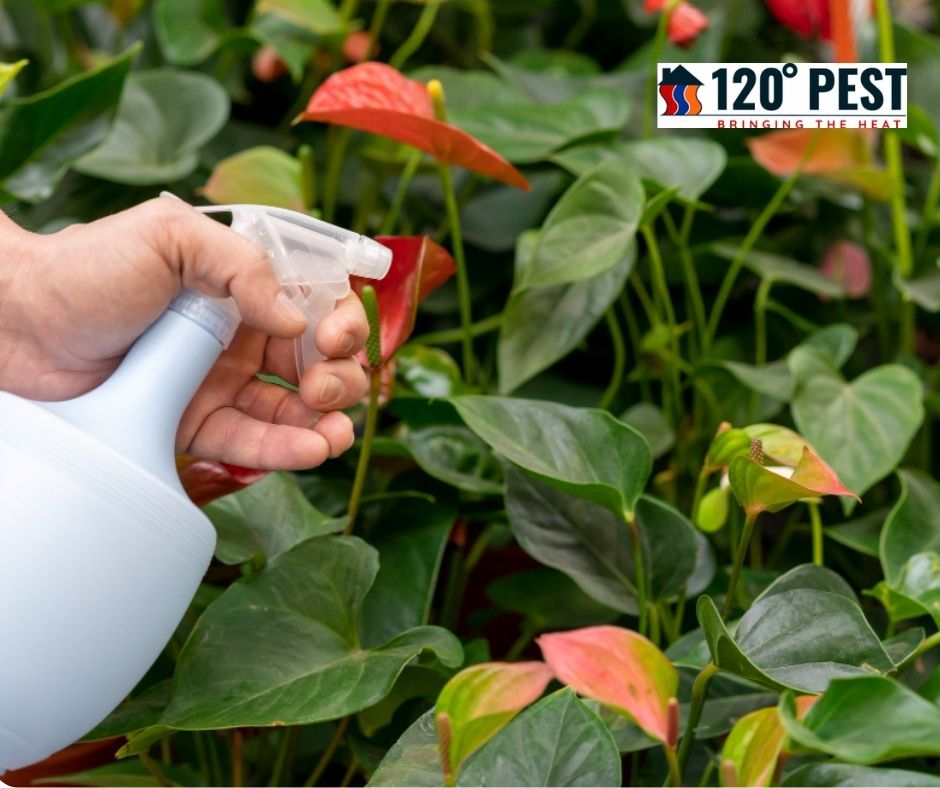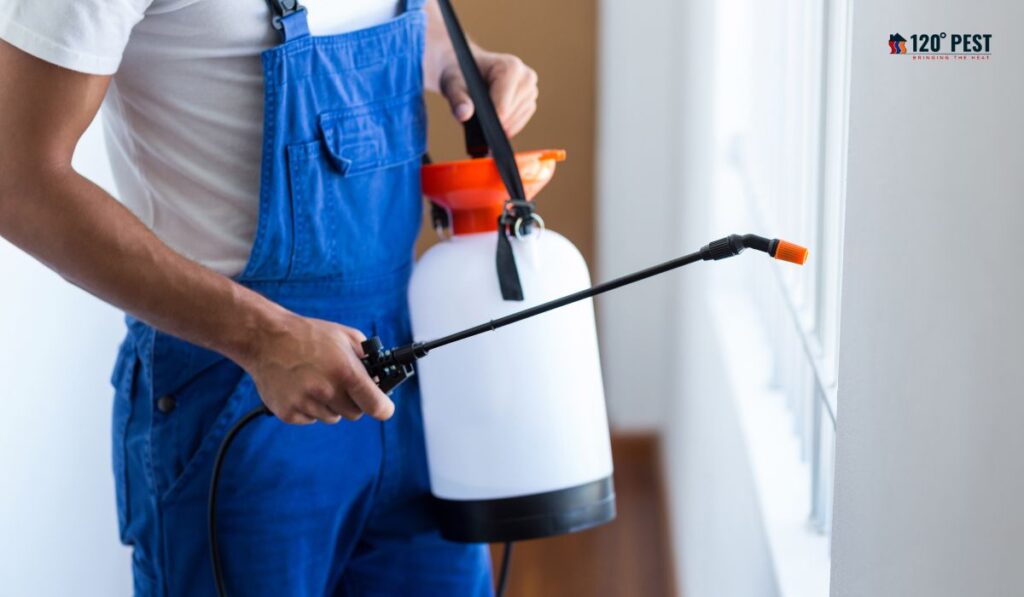Pest control is a critical aspect of agriculture and maintaining healthy ecosystems. While chemical pesticides have traditionally been used to combat pests, concerns over their impact on human health and the environment have led to a growing interest in natural pest control methods. These methods harness the power of nature to manage pest populations without relying on synthetic chemicals. In this article, we will explore 12 natural pest control methods, discussing their advantages and disadvantages.
Biological Control
Biological control involves introducing natural predators, parasites, or pathogens to control pest populations. For example, ladybugs can be introduced to control aphids on crops. The advantages of biological control include its effectiveness and sustainability. However, it may take time for populations of natural enemies to establish, and there is a risk of non-target effects if introduced species become invasive.
Crop Rotation
Crop rotation involves alternating the types of crops grown in a particular field over time. This disrupts pest life cycles and reduces the buildup of pest populations. The advantages of crop rotation include improved soil health and reduced reliance on pesticides. However, it requires careful planning and may not be suitable for all crop types.
Companion Planting
Companion planting involves growing different plant species together to deter pests or attract beneficial insects. For example, planting marigolds alongside tomatoes can repel nematodes. The advantages of companion planting include increased biodiversity and reduced pest damage. However, it requires knowledge of plant interactions and may not always be effective.
Trap Crops
Trap crops are plants that are grown to attract pests away from main crops. Once pests are attracted to the trap crop, they can be more easily controlled or removed. The advantages of trap crops include their effectiveness at reducing pest damage and their low cost. However, they may require additional maintenance and space.
Neem Oil
Neem oil is a natural insecticide derived from the neem tree. It works by disrupting the insect’s hormonal balance, preventing it from feeding and reproducing. The advantages of neem oil include its effectiveness against a wide range of pests and its low toxicity to humans and beneficial insects. However, it may need to be applied frequently for optimal control.
Diatomaceous Earth
Diatomaceous earth is a natural powder made from fossilized remains of diatoms. It works by dehydrating and damaging the exoskeletons of insects, leading to their death. The advantages of diatomaceous earth include its long-lasting effectiveness and its safety for humans and pets. However, it may harm beneficial insects and should be used with caution.
Garlic Spray
Garlic spray is a homemade insecticide made from garlic cloves and water. It repels pests such as aphids, caterpillars, and beetles. The advantages of garlic spray include its affordability and ease of preparation. However, its effectiveness may vary depending on the pest species and environmental conditions.
Insecticidal Soap
Insecticidal soap is a natural pesticide made from potassium salts of fatty acids. It works by disrupting the insect’s cell membranes, causing them to die from dehydration. The advantages of insecticidal soap include its safety for humans, pets, and beneficial insects. However, it may need to be applied directly to pests for maximum effectiveness.
Beneficial Insects
Beneficial insects, such as ladybugs, lacewings, and parasitic wasps, can be released to control pest populations. These insects prey on pests or parasitize them, reducing their numbers naturally. The advantages of using beneficial insects include their effectiveness and sustainability. However, they may require time to establish populations and may not provide immediate control.
Mulching
Mulching involves covering the soil around plants with organic materials, such as straw or leaves. This helps retain moisture, suppress weeds, and create habitat for beneficial organisms. The advantages of mulching include improved soil health and reduced pest pressure. However, it may also provide hiding places for pests such as slugs and snails.
Physical Barriers
Physical barriers, such as row covers or netting, can be used to protect plants from pest damage. These barriers prevent pests from accessing plants while still allowing sunlight and water to reach them. The advantages of physical barriers include their effectiveness and durability. However, they may require regular maintenance and can be costly to install.
Cultural Practices
Cultural practices, such as sanitation and proper plant spacing, can help reduce pest populations by eliminating breeding sites and reducing pest access to plants. The advantages of cultural practices include their simplicity and low cost. However, they may require ongoing attention and may not provide complete control of all pests.
Advantages:
Environmental Sustainability: Natural pest control methods are environmentally friendly as they minimize the use of synthetic chemicals that can harm ecosystems, water sources, and non-target organisms. They promote biodiversity and contribute to the overall health of the environment.
Reduced Health Risks: Unlike chemical pesticides, natural pest control methods pose minimal risks to human health. They do not leave behind toxic residues on crops or in the soil, reducing exposure to harmful chemicals for farmers, consumers, and agricultural workers.
Preservation of Beneficial Insects: Natural pest control methods do not harm beneficial insects such as pollinators and natural predators. By preserving these insects, they help maintain ecological balance and ensure continued ecosystem services like pollination and biological pest control.
Sustainable Agriculture: Adopting natural pest control methods supports sustainable agriculture by reducing dependence on synthetic inputs and fostering resilient farming systems. This approach aligns with principles of agroecology, promoting long-term soil health and agricultural productivity.
Cost-Effectiveness: In many cases, natural pest control methods can be more cost-effective than chemical pesticides. While initial investment may be required for implementation, long-term savings can be achieved through reduced pesticide purchases, lower healthcare costs, and improved crop yields.
Disadvantages:
Variable Effectiveness: Natural pest control methods may not always provide consistent or immediate control of pest populations. Their effectiveness can be influenced by factors such as pest species, environmental conditions, and implementation techniques, leading to variable outcomes.
Knowledge and Expertise Required: Successfully implementing natural pest control methods often requires knowledge, experience, and careful observation of ecological dynamics. Farmers and gardeners may need training and support to understand these methods and apply them effectively.
Time and Labor Intensive: Some natural pest control methods, such as biological control and crop rotation, may require more time and labor to implement compared to chemical pesticides. They often involve proactive management practices and may not offer quick fixes for pest problems.
Limited Scope of Control: Natural pest control methods may have limitations in controlling certain pest species or addressing severe infestations. In such cases, additional interventions or integrated pest management (IPM) approaches may be necessary to achieve desired pest control outcomes.
Conclusion
In conclusion, natural pest control methods offer promising solutions for managing pests while promoting environmental sustainability and human health. By harnessing the power of nature, we can create resilient and productive agricultural systems that are less reliant on synthetic chemicals. However, achieving widespread adoption of these methods will require concerted efforts from farmers, researchers, policymakers, and consumers to overcome challenges and barriers. Through collaboration and innovation, we can create a future where agriculture thrives in harmony with nature. For more information on natural pest control methods or to seek professional assistance, please visit 120 pest control
FAQs
What is biological control, and how does it work?
Biological control involves introducing natural predators, parasites, or pathogens to control pest populations. These natural enemies prey on or parasitize pests, reducing their numbers over time.
What are the advantages of crop rotation for pest control?
Crop rotation disrupts pest life cycles and reduces the buildup of pest populations. It also improves soil health and reduces reliance on pesticides.
How does companion planting help in pest control?
Companion planting involves growing different plant species together to deter pests or attract beneficial insects. This method increases biodiversity and reduces pest damage.
What are trap crops, and how do they work?
Trap crops are plants grown to attract pests away from main crops. Once pests are lured to the trap crop, they can be more easily controlled or removed.
What are the advantages of using neem oil for pest control?
Neem oil is effective against a wide range of pests and has low toxicity to humans and beneficial insects.
How does diatomaceous earth work as a natural pest control method?
Diatomaceous earth dehydrates and damages the exoskeletons of insects, leading to their death. It’s effective and safe for humans and pets but should be used with caution around beneficial insects.
What pests can be repelled by garlic spray?
Garlic spray repels pests such as aphids, caterpillars, and beetles. However, its effectiveness may vary depending on the pest species and environmental conditions.
Is insecticidal soap safe for beneficial insects?
Yes, insecticidal soap is safe for beneficial insects, humans, and pets. It works by disrupting the cell membranes of insects, causing them to die from dehydration.
How can beneficial insects be utilized for pest control?
Beneficial insects like ladybugs, lacewings, and parasitic wasps can be released to prey on or parasitize pests, reducing their numbers naturally.
What are the advantages of using physical barriers for pest control?
Physical barriers, like row covers or netting, effectively protect plants from pests while allowing sunlight and water to reach them. They are durable and offer long-term control.





